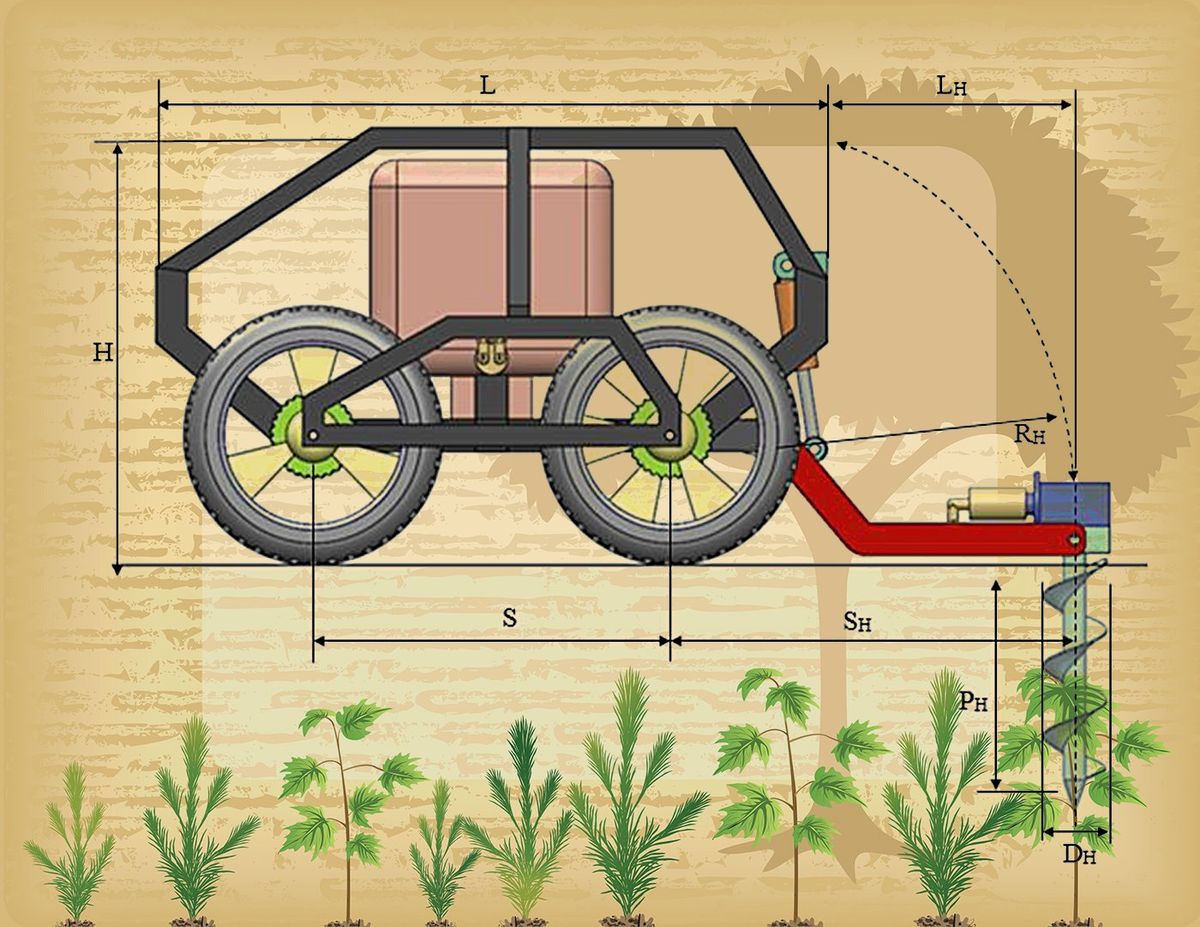This article is part of our exclusive IEEE Journal Watch series in partnership with IEEE Xplore.
Trees play clear and crucial roles in many ecosystems—whether they’re providing shade on a sunny day, serving as a home for a family of owls, or cycling carbon dioxide out of the air. But forests are diminishing through exploitative logging practices as well as the process of desertification, which turns grassland and shrubland arid.
Restoring biodiversity to these areas through growing new trees is a crucial first step, but planting seedlings in these arid environments can be both time and labor intensive. To address this problem, a team of researchers at Firat University and Adiyaman University—located in Elazig, Turkey, and Adiyaman, Turkey, respectively—has developed a concept design of a robot to drill holes and plant seedlings for up to 24 hours at a time.
Andrea Botta is an engineering professor at the Polytechnic University of Turin in Italy who has researched the use of agricultural robots. Botta, who did not contribute to this research, says that planting robots like this could fill an important gap in communities with smaller labor forces.
“Robots are very good at doing repetitive tasks like planting several trees [and] can also work for an extended period of time,” Botta says. “In a community with a significant lack of workers, complete automation is a fair approach.”
Tree-planting robots are not necessarily a new concept and can take on a variety of shapes and sizes. In their work, the research team in Turkey explored different existing tree-planting robots, including quadrupeds, ones with caterpillar belts, and wheeled robots. These robots, designed by groups such as students at University of Victoria in Canada or engineers at Chinese tech giant Huawei, either ran on steam, electric batteries, or diesel. Several of the robots were even designed to carry more than 300 seedlings on their back at a time, cutting down on time spent going between a greenhouse and the planting site.
With these designs in mind, the research team in Turkey developed a 3D model of a robotic planter that had four wheels, a steel frame, and a back-mounted hydraulic drill. Using diesel power, this 136-kilogram robot is designed to drive 300 centimeters at a time before drilling a 50-cm hole for each seedling. In future iterations, the team plans to incorporate autonomous sensing.
“As a future study, we plan to manufacture the robot we designed and develop autonomous motion algorithms,” the team write in their paper (The researchers declined to comment for this story). “The rapid development of sensor technology in recent years and the acceleration of research on the fusion of multisensor data have paved the way for robots to gain environmental perception and autonomous movement capability.”
In particular, the team plan to mount environmental sensing units—including cameras and ultrasonic sensors—to a gimbal on the robot’s back. This sensor data will then feed into motion- and object-detection algorithms the team plans to develop.
However, adding more autonomy to these types of robots doesn’t necessarily mean they should be given free rein over tree planting, Botta says. Especially in situations where they may be working alongside human workers.
“Human-robot collaboration is a very trendy topic and should be carefully designed depending on the case,” he says. “Introducing automation to a job may also introduce problems too, so it should be applied appropriately considering the local communities and scenario. For example—if a large workforce is available, the robot should be designed considering a strong synergy with the workers to ease their burden while avoiding harming the community.”
In future iterations of this design, Botta also hopes that consideration will be paid to diversity in the planting environment and planting type as well. For example, adding suspension to the robot for better all-terrain driving or adding solar panels for supplemental power and to allow the robot to operate where other fuel sources may not be readily available. Adding a renewable power option to the robots could also help ensure that they remain carbon neutral while planting.
Considering how a robot could handle multiple types of plants would also be important, Botta says.
“It seems that most—if not all—of the robotics solutions create tree farms, but probably what we need is planting actual forests with a significant biodiversity,” he says.
The work was presented in May at the 14th International Conference on Mechanical and Intelligent Manufacturing Technologies in Cape Town, South Africa.
Sarah Wells is a science and technology journalist interested in how innovation and research intersect with our daily lives. She has written for a number of national publications, including Popular Mechanics, Popular Science, and Motherboard.



